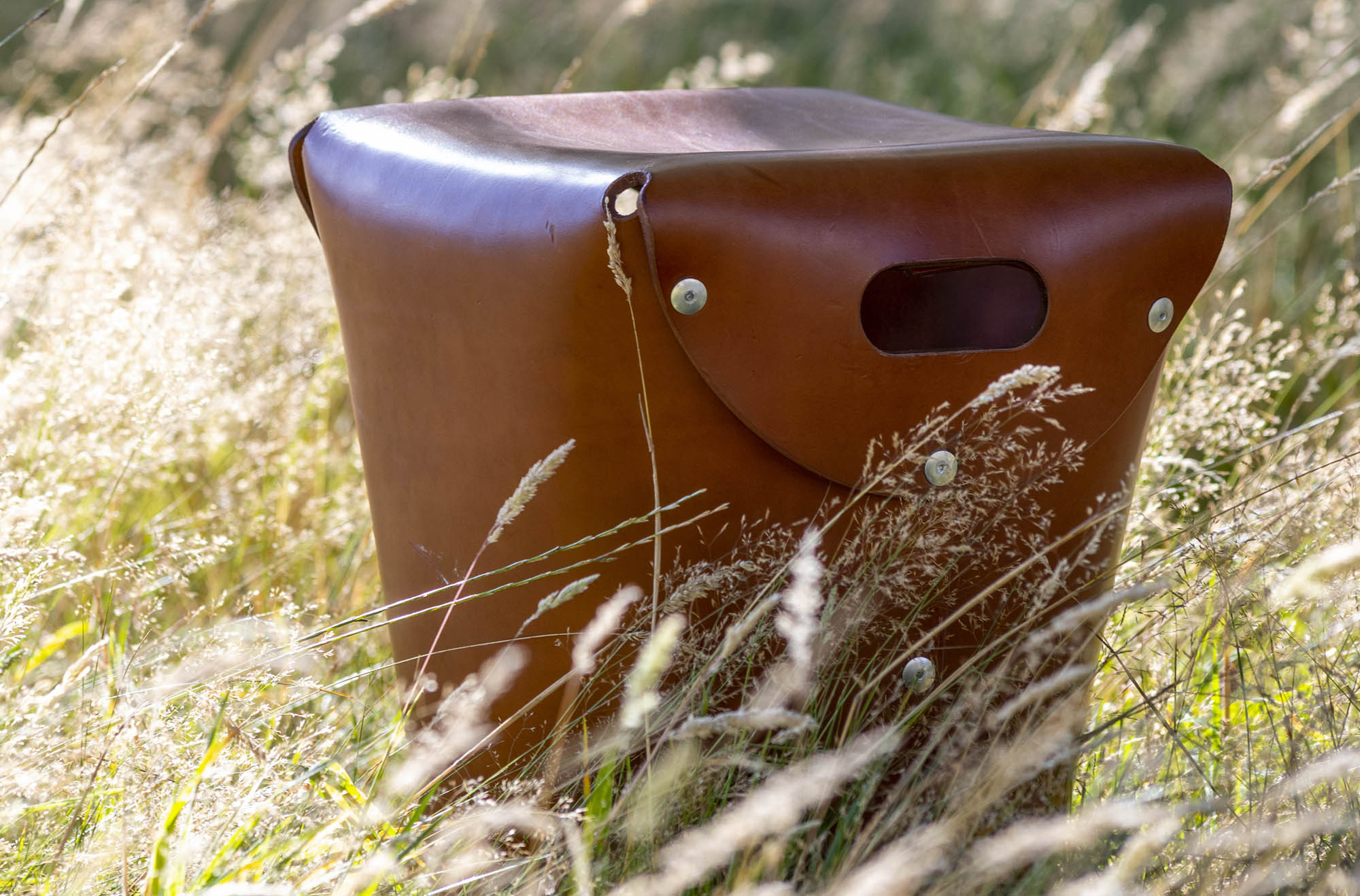
A System of Nature
Regenerative Agriculture
Words by Zoe Suen
Photography © Joanna Yee and David Cleveland
Catherine Chong first encountered the English language when she started reading the ingredient labels on vats of herbicides, pesticides, and fertilisers her family was obliged to spray on their farm in Malaysia.
It started in the 80s, when Chong’s father signed what she calls a “death contract” transferring control of the farm to an industrial agriculture company. The deal turned what was biodiverse land boasting over 20 different varieties of fruits, as well as several species of livestock, into a multi-story chicken barn. Things took a turn for the worse when all the birds on the farm died and the family was declared bankrupt, but the then 18-year-old managed to earn a scholarship to study law in the UK.
Now, the ecology, social, and governance (ESG) advisor and agro-ecological activist regrets paying off the debts her family owed. “There’s always been this anger that I’ve kept,” she says. “The past few years have been fuelled by that personal motivation.”
Chong is among a fast-growing cohort of activists, farmers, leather designers and producers, entrepreneurs, and academics championing regenerative agriculture in the UK. The term has no strict definition; for consumers especially, it can be a confusing one alongside the many earth-focused buzzwords used across the sector, from natural, to sustainable, to conservational, to organic, the latter being the only one which is legally defined.
For Nick Jefferson, the founder of recently-launched farm-to-consumer digital platform Wylde Market (“an Airbnb for artisanal produce”), regenerative agriculture is first and foremost about leaving the earth better than you found it — a seemingly common sense, yet radical departure from the practices of mono-culture farms and livestock megafarms that dominate not only Britain’s agriculture sector but also the global food industry.
“The nomenclature is far from clear, and there are businesses out there which will cynically use that to their advantage,” says Jefferson. “But the difference with regenerative agriculture is it’s actively working to promote better soil health.” This is at the heart of the regenerative farming philosophy – to restore and rebuild a naturally resilient soil ecosystem using crop rotations, green manures, grazing animals, and organic fertilisers.
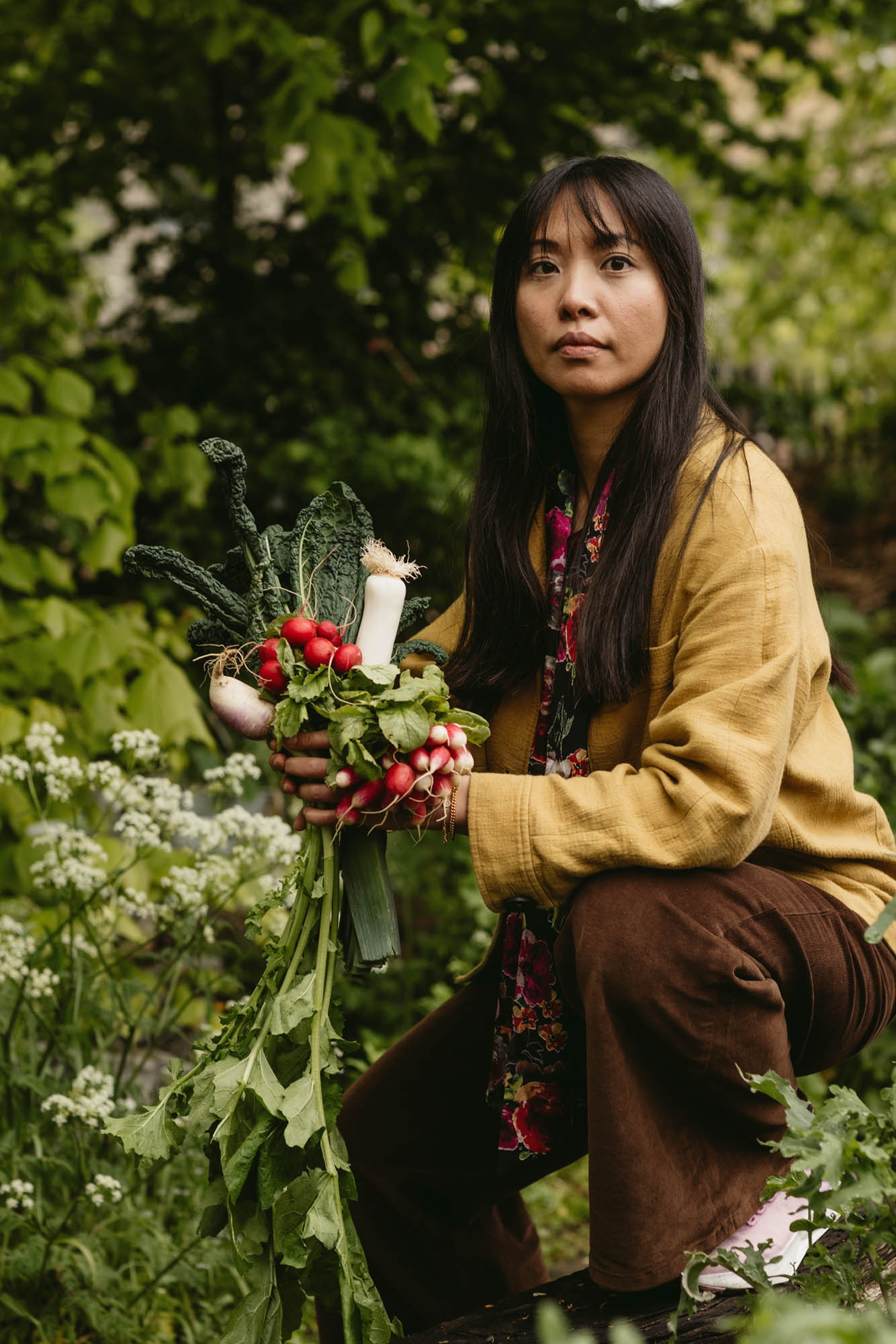 Catherine Chong
Catherine Chong
Jefferson had his lightbulb moment after moving to southern Spain with his family, where he became accustomed to having a stronger connection with the land and seas, as well as the producers that caught and grew his food. Returning to London was underwhelming — “not because we don’t produce great food here, but because of the rather cynical way the country’s big suppliers dominate supermarkets,” he says. “We actually have, I think, some of the very best food in the world. Wylde was really born out of frustration.”
According to research published in 2020 by a coalition including the International Land Coalition and Oxfam, one per cent of the world’s farms operate 70 percent of farmlands. This concentration of land control goes hand in hand with monoculture farming — or the raising of a single crop, be it wheat, corn, or rapeseed — which not only exposes crops to diseases and pests (pushing farmers to increase usage of pesticides, herbicides, and other synthetics), but often leads to soil exhaustion, depleted biodiversity and renders producers more vulnerable to extreme weather events.
Monocultures emerged in 17th century Caribbean sugar plantations to up efficiency and profits, Frank Uekötter, professor of environmental humanities at the School of History and Cultures, University of Birmingham, explains: “From the corn fields of Iowa to date palms in the Sahara; from banana plantations in the Americas to eucalyptus trees in India – wherever we look, we find large production regimes dedicated to a single commodity.”
As droughts and heatwaves increase amid climate change, this approach to farming is threatening food security to an unprecedented degree. And it isn’t just food that’s at risk. According to Allison Balogh, who penned an article on “The rise and fall of monoculture farming” for the European Commission’s EU Research and Innovation Magazine, Horizon, monoculture “now supplies not only most of our food but a significant share of non-food crops like cotton.”
Meanwhile, scientists at London’s Natural History Museum found in 2021 that the UK is consistently in the bottom 10 percent of global countries for biodiversity and has lost more biodiversity than any G7 country.
“If you drive out past fields and see a blanket of yellow, a blanket of purple, a blanket of blue, that’s monoculture, that’s industrial farming for you,” notes Chong. “When you visit a regenerative farm, the beauty of the diversity you see, it’s amazing.”
It goes without saying that regenerative agriculture’s payoffs are more than skin deep. Chong names the eschewal of toxic chemicals one of regenerative agriculture’s most staggering (and immediate) benefits, and still remembers the smell of pesticides and herbicides her family was pressured to use. “Most farmers who are converting will say they just didn’t think about it, they did it because they were told to,” she adds.
Meanwhile, these practices also produce higher quality food. According to a study published in 2022 by academics including David R. Montgomery, professor of earth and space sciences at University of Washington, regenerative systems produced crops with 11-34 percent higher nutritional composition than neighbouring farms employing industrial techniques. The same study found that beef and pork from regenerative farms was contained more essential fatty acids including Omega-3.
When it comes to products like leather, agricultural practices also have an impact. “When you put an animal skin on the table, you can very quickly tell the health of that animal,” says Bill Amberg, a furniture and interior designer who started working with leather when he was just a child growing up in Northampton, the heart of the British shoemaking industry.
Among his studio’s many products is The Knepp Collection, a range of sustainable furniture made using leather from the free-roaming longhorn cattle on Knepp Estate, a 3,500-acre rewilding project in Sussex. Rewilding is a process whereby land is reverted back to some form of wild state, where animals are introduced to try and recreate environments that once might have been prevalent.
According to Amberg, characteristics of leather made from high-welfare cattle include a denser and more consistent fibre structure, a lack of veining within the skin, and a thicker grain layer on the surface — all things that once explained to clients, help drive interest in and support for high welfare practices.
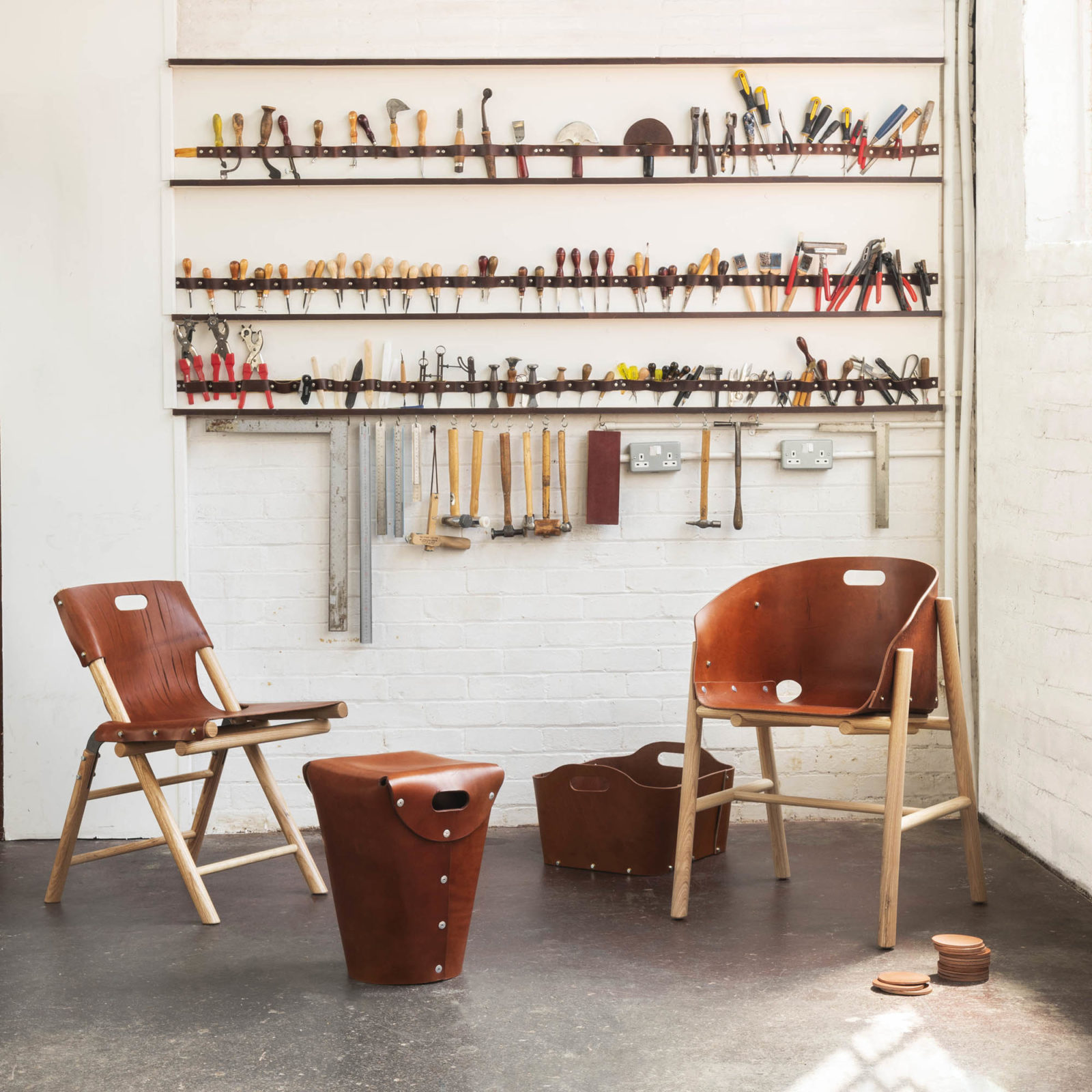 Knepp Estate Furniture Collection by Bill Amberg Studio
Knepp Estate Furniture Collection by Bill Amberg Studio
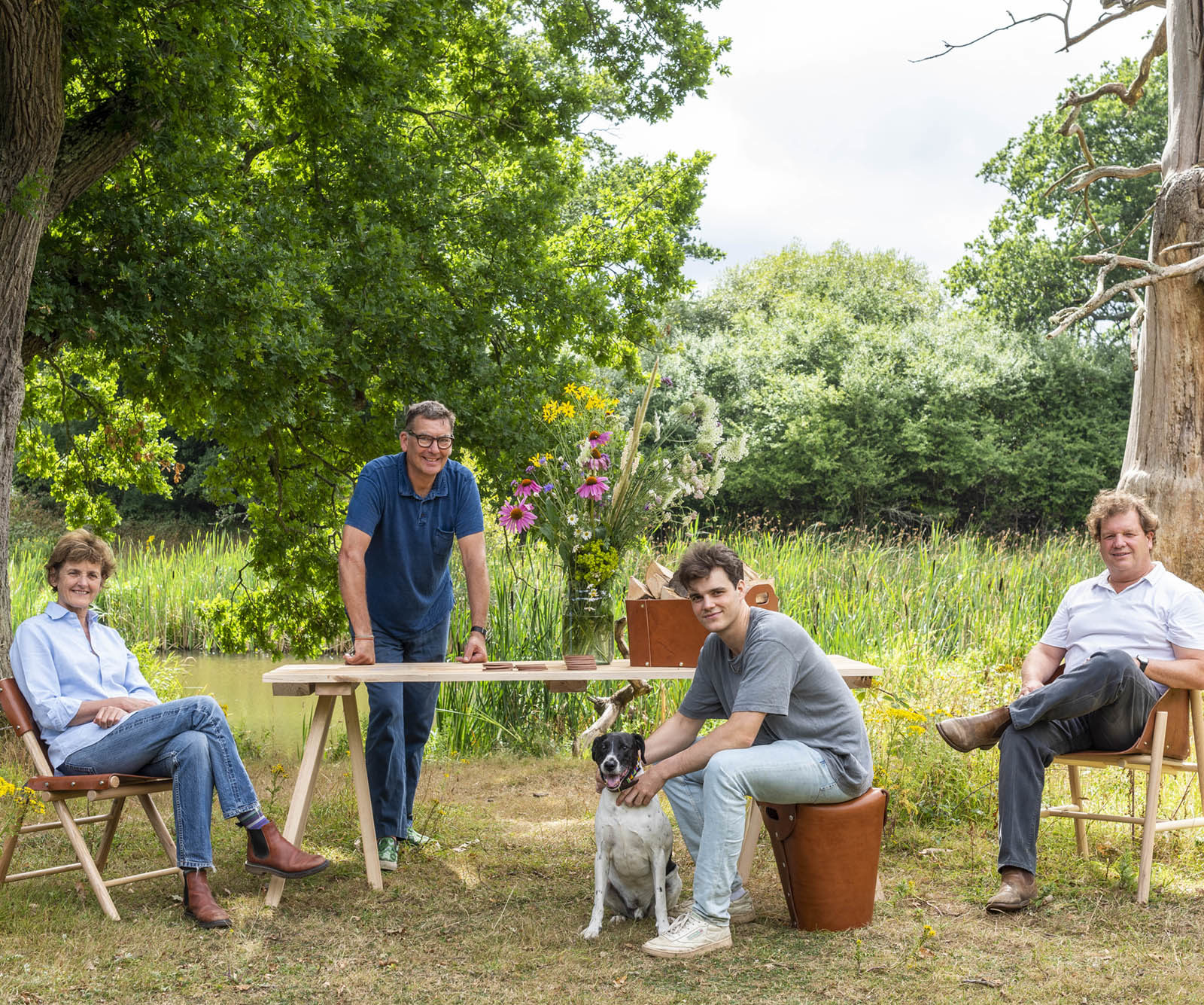

“Hides from regenerative farms produce leather with variation and ‘character,’ such as growth marks and scratches — the marks of a life outdoors,” echoes Sara Grady, who alongside Alice Robinson, helms British Pasture Leather, the first supply of leather made solely from the hides of animals raised on regenerative farms in the UK. ‘Pasture fed’ is a relatively new descriptor for grazing animals, like cows, and can include animals from rewilded, regenerative, organic and more traditional beef farmers. It entails rearing the animals using just grass, herbal leys and hay (rather than silage) – and wherever possible, keeping the animals in pastures rather than in overwintering sheds.
For British Pasture Leather, it’s a matter of provenance. Hides should be from pasture fed cattle (organic, traditional, regenerative – but not intensive) where each hide can be traced back to the farmer and tanned in a sustainable way. They not only work entirely in Britain to create a shorter supply chain but use traditional vegetable tanning methods to ensure the leather can biodegrade without ecotoxicity, Grady notes. While farms don’t sell hides, British Pasture Leather voluntarily offers a contribution to their suppliers to return value back to the community.
One of the biggest challenges Grady and Robinson face is in undoing common standards of leather quality, which for years have centred on uniformity and other expectations that align with synthetic materials. “We believe that these [variations] are beautiful attributes which speak to the life of a grazing animal – and give evidence that it was raised in accordance with its nature, in systems that deliver positive impacts,” Grady adds. “Working in this way involves more work and expense than standard practice. But we believe that our method delivers considerable additional value.”
On a policy level, the state of biodiversity and the risks this poses to the economy haven’t gone unnoticed. The previous government introduced the Environmental Land Management Scheme (ELMS), including the Sustainable Farming Incentive (SFI), which aimed to reward farmers for sustainable practices, like omitting pesticides, planting hedges, and encouraging pollinators with wildflowers. The current government is reviewing aspects of these policies.
But ultimately, farmers are largely driving adoption of regenerative practices due to other factors — chief among them the rising cost of synthetics due to the war in Ukraine and an uptick in oil and gas prices, says Chong. “A lot of farmers in the UK have reported a massive reduction in their input costs — costs they thought were fixed costs.”
“There is a positive and rich story to tell about farming and about the leather production process, and it’s a story that’s rarely told or revealed.”
Not all farmers are looking to regenerative agriculture purely as a money saver, however. Take Francesca Cooper and Holly Fallick, childhood friends who started Isle of Wight’s Nunwell Home Farm with goals to prioritise planetary activism, human nutrition, and animal welfare.
Cooper and Fallick, returned to the island with their families after realising they both longed to work on the land as farmers. The duo practiced veganism for a while but found the diet could no longer provide them with the necessary nutrients.
“Our health was breaking down and we needed to reintroduce meat into our diets but wanted to do so in a way we’d be happy with,” says Cooper, who alongside Fallick drew up a business plan and pitched it to a local landowner in 2021. “He was really excited about the vision, and it just showed that we caught a wave of people who felt like us — who didn’t want to support industrialised high-up agriculture.”
The farm was operational by October 2021, and the duo have directly managed 135 acres of land since. They knew they were taking on an arduous challenge and there’d be little to no instant gratification — the farm had previously been used for high-intensity beef production, and arable land was largely monoculture, with very little topsoil and no diversity.
But coming up to their two-year anniversary, encouraging progress has already been made. On Nunwell Home Farm’s pasture land, Cooper is already seeing a “massive increase in diversity” in the form of wildflowers, which the duo thought would take much longer to reappear.
This is both due to their cutting out synthetic nitrogen fertilisers, as well as the various mob-grazing techniques Cooper and Fallick employ to help the soil bounce back. Their native breed Galloway cows — which are grass-fed and hardy, allowing them to stay out all year round — are moved every few days in the summer to ensure they cause high levels of disturbance to the ground by trampling in carbon and organic matter. The soil is then given time to recover, says Cooper.
Similarly, Nunwell Home Farm’s pigs are moved every week and in doing so, help seeds take root and germinate throughout the estate’s 350 acres of rewilding land; their chickens, which live in mobile coops, are moved twice a week to ensure the ground benefits from trampling and scratching without overdoing it.
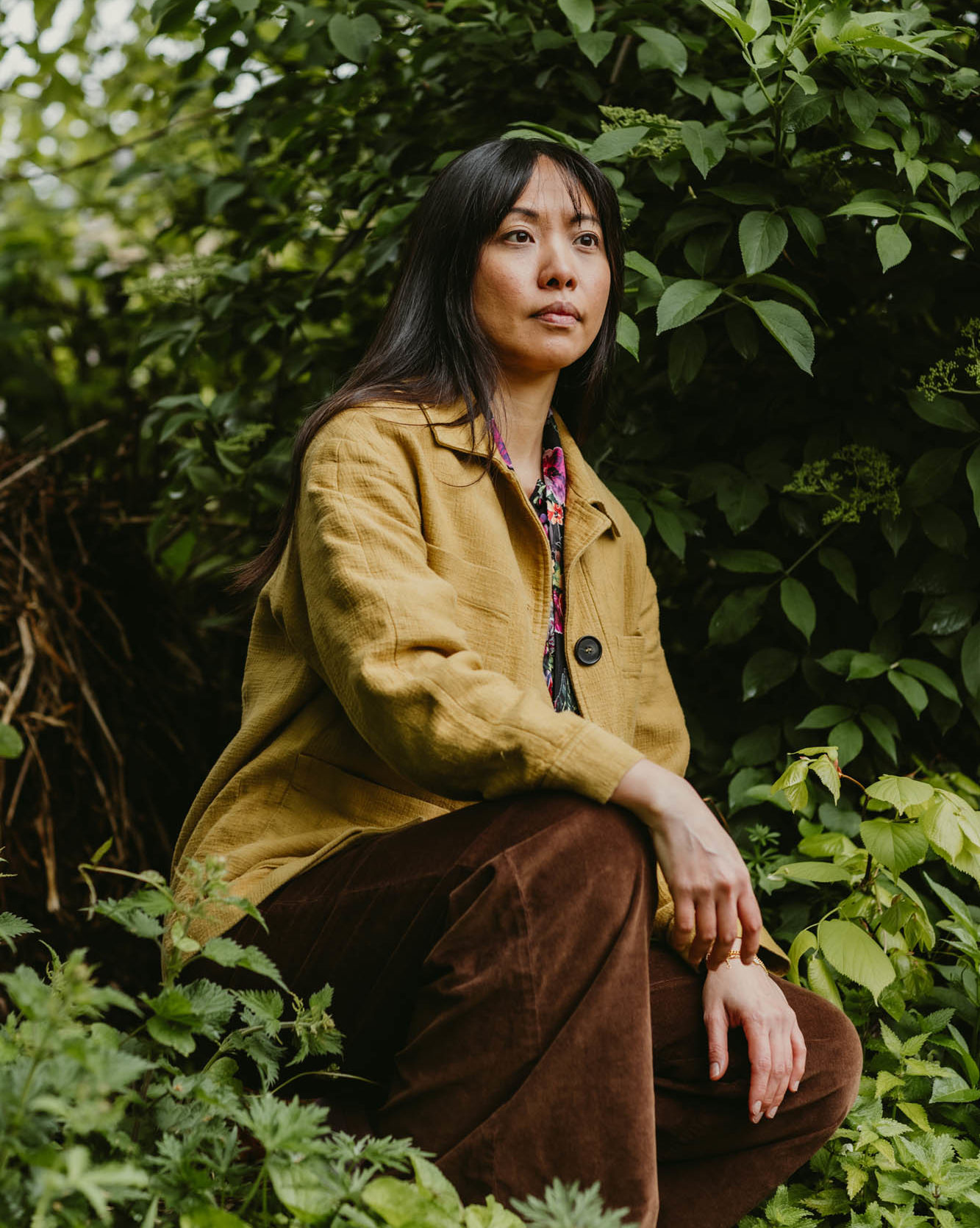
Regenerative agriculture is not without its detractors, especially when it comes to its role in the fight against climate change and links to polarising topics like carbon sequestration. But what is clear is that these systems can’t come close to becoming a planet-saving miracle cure unless broader changes are enacted.
Cooper is adamant that the rise of regenerative practices must accompany education on the consumer side, too. “We need to move towards lowering consumption and focus on waste within the system,” she says, citing a nose-to-tail approach to cooking. “This means raising animals in a way to ensure they have all the micronutrients, utilising all their benefits to the land while they are alive, and eating less meat,” she adds, listing leather and offal meats as waste products and resources that can be better utilised as part of a conscious meat consumption. Meanwhile, Chong and Jefferson both urge shoppers to learn more about the differences between industrial and regenerative farming and support the latter by shopping directly from farmers on and offline.
This means education not only on regenerative agriculture, but the many industries that intersect with it. “All bovine leather is a product of our food systems, because it comes from beef production – but this is rarely recognised,” adds Grady.
“There is a positive and rich story to tell about farming and about the leather production process, and it’s a story that’s rarely told or revealed,” Grady continues, noting the importance of not only greater awareness of regenerative farming and the things regenerative farms produce, but on the policy side, a level playing field for these products to fairly compete with dominant supply chain fixtures.
Going up against these forces is an uphill battle, and as two other women in a field long dominated by older men, Cooper and Fallick are no strangers to being second-guessed. “New entrants in the world of agriculture or any industry will always be met with an element of resistance, and being women has added to that,” says Cooper.
Chong hasn’t been deterred either — not by a schedule that once had her working more than double the hours of an average full-time employee, nor a partner who threatened to leave her while she was campaigning for an agriculture bill.
“He asked me, this isn’t Malaysian politics, why are you, as a foreigner, so obsessed? To me, there’s no boundary to ecology, to the social-ecological harm we do,” Chong says. “Any good that happens in the UK can go on to inspire other countries.”
READ MORE

Breaking Through the Class Ceiling
What can a photographic exhibition at Southampton University teach us about social mobility? Students, staff and alumni share their experiences and contribute to a complex, intersectional picture of challenges.

The Rich History of the Leather Trunk
Rory FH Smith charts the evolution of luggage and the role of leather - a story synonymous with changes in transportation.

Where the Oaks Grow
A timeless symbol of Britishness, the great English oak and its devoted army of coppicers are fundamental in producing some of the world’s finest tanned leather.